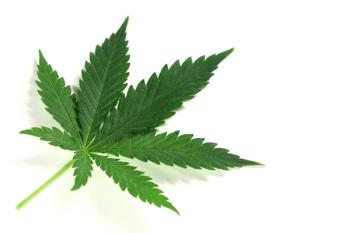Belgian Study Examines Effect of Cannabis Consumption on Physical Activity
The study examined data from nearly 20,000 individuals and found no link between cannabis users and non-users and levels of physical activity.
A recently published study examined the long-held assumption of a link between cannabis and a sedentary lifestyle (1). It also noted past research suggesting a possible positive effect on physical activity from cannabis consumption, though they resulted in mixed evidence. To examine a particular population, this study aimed to analyze current cannabis users as opposed to past users or lifetime users. The
In this study, intended to be representative of Belgium, data from the Belgian Health Interview Survey (2001–2018) was used to analyze past-month cannabis use and levels of physical activity, while adjusting for confounding variables. The Belgian Health Interview Survey has been conducted every four to five years starting in 1997. Data from two waves of the survey were used. Nearly 20,000 individuals ages 15–64 years were included in the study.
Covariates considered were age, education, sex, the Global Activity Limitation Indicator, degree of urbanization, and depression and anxiety, along with which year of the survey the data came from and the geographical location of the participant. Due to the illegal nature of cannabis in Belgium, the responses for cannabis use were given anonymously to decrease the potential influence on the honesty of the responses.
A regression analysis and a propensity score matching analysis were conducted, and neither supported a positive or negative effect on physical activity. Also demonstrated in the study was the decrease in probability of reporting past-month cannabis as age increased, along with higher cannabis use reported by men and individuals with anxiety.
“There was no evidence suggesting that past-month cannabis users have better or worse physical activity levels compared to non-users in the Belgian population aged 15–64 years,” the researchers concluded in the abstract.
One consideration when evaluation the results is that the target group of current users may not have been fully captured, bearing in mind the possibility that some participants were first-time users who never consumed cannabis afterwards, for example. Additionally, no information was collected on the frequency of past-month cannabis use, the cannabinoids consumed, or when the cannabis was consumed in relation to physical activity. A distinction between medical and recreational cannabis was also not made in this study.
A note about the assumed link between cannabis use and physical activity was included in the conclusion: “While we argue that the stereotypical image of cannabis users having more sedentary lifestyles should be critically reevaluated in light of our and other research, we still consider promoting sufficient levels of physical exercise to be of utmost importance, both in user and non-user populations.”
The researchers suggested that further studies could involve data from fewer waves of data, the forthcoming wave of data from 2023 HIS edition, and using more specific variables.
Reference
- Vernaillen, B.; Devleesschauwer, B.; Vansteelandt, S.; Gisle, L.; Drieskens, S.; Damian, E. Cannabis use is not associated with altered levels of physical activity: evidence from the repeated cross-sectional Belgian Health Interview Survey. J Cannabis Res. 2025. DOI:
10.1186/s42238-025-00278-8
Newsletter
Unlock the latest breakthroughs in cannabis science—subscribe now to get expert insights, research, and industry updates delivered to your inbox.






